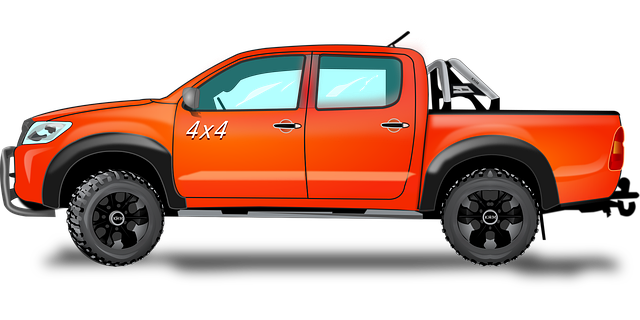Snatch blocks, indispensable diagnostic tools for Brownsville truck mechanics, enhance loading/unloading processes by securely attaching to cables/chains. Their versatility allows swift identification and resolution of hoisting system issues, ensuring vehicle and cargo safety during transport. Advanced diagnostics integrate with modern vehicles' OBD systems, providing real-time data on engine performance and critical parameters. These tools prevent costly repairs, minimize downtime, and ensure reliable truck operations by enabling thorough inspections, error code tracing, and performance analysis. Regular maintenance and timely replacements are crucial to address wear and tear, misalignment, or faulty installations, extending component lifespans in the demanding conditions of Brownsville's trucking industry.
Snatch blocks are a crucial component in truck mechanics, enabling smooth and efficient coupling and uncoupling of trailers. This essential hardware facilitates the seamless operation of semi-trucks and their various attachments. In this comprehensive guide, we explore the role of Brownsville truck diagnosis tools in identifying snatch block issues, delving into common causes of malfunction, diagnostic procedures, replacement steps, and maintenance tips for optimal truck performance.
- Understanding Snatch Blocks: A Fundamental Component in Truck Mechanics
- The Role of Brownsville Truck Diagnosis Tools in Identifying Snatch Block Issues
- Common Causes of Snatch Block Malfunction
- Diagnostic Procedures: Uncovering the Problem with Snatch Blocks
- Replacing Snatch Blocks: A Step-by-Step Guide for Trucks
- Maintaining Snatch Blocks for Optimal Truck Performance
Understanding Snatch Blocks: A Fundamental Component in Truck Mechanics

Snatch blocks are a fundamental component in truck mechanics, serving as powerful diagnostic tools for seasoned professionals in Brownsville. These versatile devices play a crucial role in lifting and securing heavy loads, making them essential for various trucking operations. By understanding their mechanism and functionality, mechanics can efficiently troubleshoot and resolve issues with truck equipment, ensuring optimal performance on the road.
In the realm of truck maintenance, snatch blocks offer a reliable solution for enhancing loading and unloading processes. Their design allows for quick and secure attachment to cables or chains, facilitating the safe handling of cargo. With these tools, mechanics can diagnose problems related to hoisting systems, such as worn-out components or improper setup, promptly addressing them to prevent delays and ensure the safety of both vehicles and cargo during transportation in Brownsville and beyond.
The Role of Brownsville Truck Diagnosis Tools in Identifying Snatch Block Issues

Brownsville truck diagnosis tools play a pivotal role in identifying snatch block issues, which are common challenges faced by fleet managers and mechanics alike. These advanced diagnostic tools are equipped with sophisticated algorithms and sensors that can accurately detect even subtle abnormalities within the complex mechanical systems of trucks. By seamlessly integrating with modern vehicles’ onboard diagnostics (OBD), they provide real-time data on engine performance, transmission health, and other critical parameters. This enables professionals to pinpoint potential snatch block problems before they escalate into costly repairs or safety hazards.
With their help, technicians can perform thorough inspections, trace error codes, and analyze performance metrics specific to the snatch block mechanism. Brownsville Truck diagnosis tools offer detailed reports and visualizations, making it easier to understand the root causes of issues like misalignment, worn-out components, or fluid leaks. This proactive approach not only extends the lifespan of truck components but also enhances overall fleet efficiency by minimizing downtime and ensuring smooth, reliable operations on the road.
Common Causes of Snatch Block Malfunction

In many cases, snatch blocks require maintenance or replacement due to several common causes. One of the primary issues is excessive wear and tear, often accelerated by improper use or lack of lubrication. These factors can lead to damaged components within the block, affecting its ability to effectively manage power transfer during heavy-duty operations, especially in Brownsville truck applications using advanced diagnostic tools.
Another prevalent cause is misalignment or faulty installation. Even slight misalignments can cause excessive friction and heat buildup, leading to reduced efficiency and potential failure. Using high-quality replacement parts and ensuring precise installation by qualified technicians are essential steps in preventing such problems, especially when considering the demanding conditions under which many trucks operate.
Diagnostic Procedures: Uncovering the Problem with Snatch Blocks

When it comes to diagnosing issues with snatch blocks, especially in the context of Brownsville truck repairs, modern diagnostic procedures offer a range of powerful tools. Mechanics today have access to advanced technologies that allow for precise identification of problems. These tools include computer-aided diagnostics (CAD) systems and specialized scan tools that can quickly analyze various components of the vehicle’s electrical and mechanical systems.
By plugging in these Brownsville truck diagnosis tools, technicians gain access to a wealth of data, enabling them to uncover hidden issues within the snatch block assembly. This may involve checking for faulty wiring, worn-out bearings, or misaligned components—all critical factors that can impact the overall performance and safety of the vehicle’s loading system. With these diagnostic methods, mechanics can efficiently pinpoint problem areas, leading to more effective repairs and enhanced truck functionality.
Replacing Snatch Blocks: A Step-by-Step Guide for Trucks

Snatch blocks are essential components in a truck’s braking system, especially for heavy-duty vehicles. When it comes to replacing snatch blocks, it is crucial to follow a systematic approach to ensure safe and efficient maintenance. This guide will walk you through the process, specifically tailored for Brownsville truck owners using the right diagnosis tools.
First, identify the worn or damaged block(s) by inspecting the brake system visually and with specialized tools. Next, gather the necessary replacement parts, ensuring compatibility with your truck’s make and model. Disassemble the affected brakes, carefully removing the old snatch blocks, and inspect the surrounding components for any additional wear. Install the new blocks, tightening them to the specified torque ratings. Finally, test the braking system thoroughly after the replacement to guarantee optimal performance and safety using Brownsville’s advanced truck diagnosis tools.
Maintaining Snatch Blocks for Optimal Truck Performance

Maintaining snatch blocks is crucial for optimal truck performance, especially in Brownsville where reliable vehicle diagnostics are essential. Regular checks and upkeep ensure that these components function efficiently, directly impacting the overall health of your truck’s drivetrain. Snatch blocks, used to facilitate smooth coupling and uncoupling of trailers, require careful attention due to the high-stress environment they operate in.
Brownville Truck diagnosis tools play a pivotal role in monitoring snatch block condition. Advanced diagnostic systems can identify even subtle issues, allowing for proactive maintenance. Regular lubrication, inspection for wear and tear, and timely replacement of worn components are key practices to extend the lifespan of snatch blocks, thereby enhancing safety on the road and reducing downtime.
Snatch blocks are indispensable components in truck mechanics, ensuring smooth coupling and uncoupling of trailers. Regular maintenance and prompt diagnosis using effective tools, like those offered by Brownsville Truck Diagnosis, are crucial for preventing costly malfunctions. By understanding common issues, following proper diagnostic procedures, and employing a step-by-step replacement guide, truck owners can significantly enhance their vehicles’ performance and reliability on the road.



